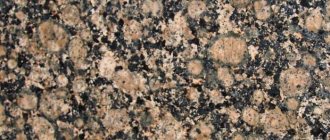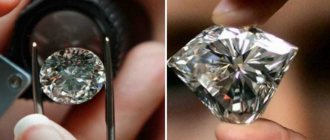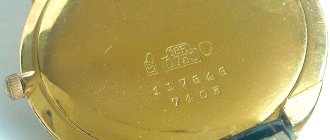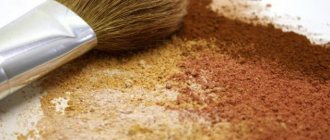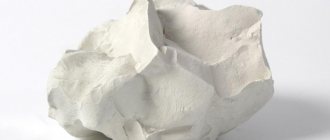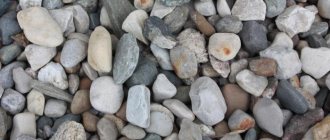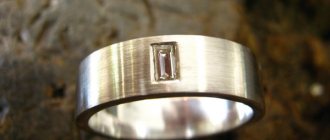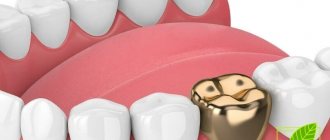What is kaolin clay? Advantages. How to use. Kaolin clay vs bentonite clay. Risks and side effects.
If you've been experimenting with bentonite clay as part of your natural beauty routine but are looking for a gentler option, then kaolin clay is perfect.
What is kaolin clay used for? This versatile substance is used as a gentle cleanser, gentle exfoliant, and natural ingredient to reduce acne and whiten teeth. Also for the treatment of diarrhea, ulcers and exposure to toxic substances.
Kaolin is full of minerals and detoxifying ingredients. Softer and less drying than other mineral rocks.
Let's see what kaolin clay / kaolinite is, where it is located, how to take it orally and use it in facial cosmetics
What's happened
Kaolin clay is primarily composed of kaolinite, a mineral found throughout the Earth. It is sometimes called white or Chinese.
What makes kaolinite useful?
Kaolin is named after the hill of the same name in China, where it was mined for hundreds of years. Today, kaolinite is mined in various places around the world, including parts of China, the United States, Brazil, Pakistan, Bulgaria, and others.
Formed in soils formed by the weathering of rocks in hot, humid climates, such as tropical forests.
Soft consistency, usually white or pink in color. The composition includes tiny crystals of the minerals silica, quartz, feldspar. Naturally contains copper, selenium, manganese, magnesium, zinc.
It is not usually taken orally for the purpose of obtaining nutrients, but rather to reduce gastrointestinal problems or, more often, applied topically to the skin.
Kaolinite and kaolin pectin are popular in pottery and ceramics, in the production of toothpaste, cosmetics, light bulbs, china, porcelain, certain types of paper, rubber, paints and other industrial products.
There are several different types and colors of kaolin clays available.
The common mineral is white in color, but occurs in a pink-orange-red hue due to the oxidation of iron and the formation of rust. Red kaolin clay indicates high levels of iron oxide near its location. This type is more suitable for people who want to prevent age-related manifestations.
Green kaolin clay comes from rock containing plant matter. It has high levels of iron oxide. Very drying and better suited for dermis prone to acne and excessive sebum production. Learn more about green clay
Click on pictures to enlarge!
Clay rocks of the kaolinite group
Kaolin clays Such clays include primary kaolins (clays of the weathering crust, composed mainly of kaolinite), secondary kaolins that arise during the redeposition of primary ones, and kaolinite clays, usually formed due to the precipitation of the corresponding products of deep weathering from colloidal solutions.
Kaolins and kaolin clays are colored predominantly in light colors (white, light gray, yellowish-white). However, even with a small admixture of organic (humic) substances, they acquire a dark gray or even black color (carbonaceous clays). As studies carried out by M.F. Vikulova using an electron microscope have shown, kaolinite particles in colloidal fractions have different origins.
Sometimes kaolinite is formed at the site of clay formation due to the crystallization of gels of silicic acid and alumina, and then its particles have the correct crystallographic outlines. This method of formation is typical for primary kaolins of the weathering crust and some lake-marsh deposits (sugar clays). In other cases, kaolinite forms pseudomorphs on particles of muscovite, and perhaps other minerals, as a result of their gradual decomposition in the weathering crust.
When the weathering crust is eroded, kaolinite is transported and deposited in the form of very small particles. Such particles are characterized by an irregular shape caused by their fragmentation during transport.
In coarser-grained fractions, kaolinite forms lamellar leaves. There are also quite large (0.1 mm or more) intergrowths that look like elongated worm-shaped curved grains.
In addition to kaolinite, the described clays always contain an admixture of halloysite, hydromicas, organic substances, pyrite, siderite and detrital grains (especially quartz grains and weathered feldspar).
The structures of kaolinite clays are characterized by certain features. In addition to the clastic structures characteristic of hydromica clays (psammopelite and aleuropelite), gel structures formed during the coagulation of colloidal particles smaller than 0.001 mm in diameter are widespread in kaolinite clays. The most typical microtextures are entangled fibrous and oriented.
Some varieties of kaolinite clay rocks (sugar clays) are sometimes characterized by an uneven distribution of lighter and darker areas of the rock, enriched in organic matter (flaky, streaky, conglomerate-like and brecciated structures), the presence of ooid (bean) and spherulite structures.
Advantages
How does kaolin affect the skin? Is it good for gut health?
Let's describe the potential benefits of kaolin clay.
Does not irritate sensitive skin
Kaolin is suitable for almost any skin type and is considered one of the softest available. Shows a delicate, non-irritating effect in case of increased sensitivity. Found in cosmetic products: masks, facial scrubs, helping to cleanse and exfoliate, leaving behind a smooth surface, even tone and texture.
Because it is gentle, it serves as a suitable gentle cleanser and detoxifier for sensitive skin.
Kaolin has an attractive pH level close to that of human skin. This means that it does not cause irritation and has a beneficial effect on sensitive, delicate or dry epidermis.
It is recommended to apply kaolin clay to your hair and scalp. It will cleanse and reduce irritation without drying out your hair. Mouth rinsing, gum cleansing and teeth whitening have a beneficial effect.
Fights acne and inflammation
According to a 2010 report, natural clays have been used to help with skin infections since the earliest recorded history. The elements have natural antibacterial properties. Capable of killing a wide range of human pathogens that cause skin rashes and acne.
How is kaolin useful for acne? By absorbing excess oil and dirt from the skin surface, it helps unclog pores and prevent the appearance of blackheads and blemishes. Soothes and reduces redness and signs of inflammation.
Demonstrates a positive effect in clearing acne-prone epidermis without worsening irritation. If used approximately twice a week to exfoliate, it will leave a soft, smooth feel. The face will be refreshed and oiliness will decrease.
Reduces signs of aging
Kaolin clay is ready to prevent signs of aging such as fine lines, wrinkles. Tones and tightens the oval of the face.
There is evidence that it increases skin elasticity and firmness due to its ability to remove dead cells and reduce flaking and dryness. The iron contained in kaolin clay, especially the red varieties, is believed to help soften and fight damage.
Kaolin clay evens out overall tone by lightening dark spots, redness and irritation due to insect bites, rashes, poison ivy, etc.
Potential help in treating gastrointestinal diseases
Kaolin pectin, a liquid preparation of kaolinite and pectin fibers, is used to treat diarrhea and stomach or intestinal ulcers.
The most common industrial preparations of kaolinite for diarrhea include attapulgite and bismuth subsalicylate (the active ingredient in Pepto-Bismol). Other brands sold in the US include Kaodene NN, Kaolinpec and Kapectolin.
Another traditional use is to soothe the stomach. In some parts of the world, kaolin clay has historically been common as a food grade clay for oral use to suppress appetite and support detoxification. Widely used for weight loss.
Helps blood clotting
Certain types of kaolin are used to speed up blood clotting and stop dangerous bleeding. There are medical facilities that infuse kaolinite-based aluminosilicate into certain types of gauze materials to treat wounds.
Main types of rocks
Primary kaolins. They are usually white in color and in this case, when fired, they produce a white shard. They lie on acidic crystalline rocks, due to the weathering of which they are formed. The thickness of the kaolin weathering crust can be great (usually tens of meters, often about a hundred meters). In a vertical section, it is divided into three zones: at the base there is a gruss zone, above - hydromica and kaolinite. Primary kaolins are usually not very plastic and contain an admixture of detrital particles (quartz, undecomposed feldspars, mica, etc.), the amount of which is especially high in relatively coarse-grained fractions (more than 0.05 mm). Kaolinite predominates in fine-grained fractions. Hydrated mica and halloysite are also present. A very characteristic feature of primary kaolins is a gradual transition down the section into unaltered rocks and the presence of relict structures characteristic of parent sediments.
Secondary kaolins . Secondary kaolins, unlike primary ones, always occur among sedimentary rocks, often among sands, forming more or less thick lens-shaped layers. They are formed due to the erosion of primary kaolin deposits simultaneously with their appearance or in another geological era. Therefore, they are usually distributed in close proximity to areas of the former distribution of kaolinite weathering crust.
Secondary kaolins are colored in light colors, are mostly mealy, have little plasticity and therefore require the addition of plastic clays in the manufacture of porcelain and earthenware products. Secondary kaolins, like primary ones, are characterized by high fire resistance. Kaolinite clays. Many kaolinite refractory clays, as shown by the work of M. F. Vikulova, were formed mainly not due to the deposition of detrital particles of kaolinite, but by the synthesis of kaolinite from gels of silica and alumina at the site of sediment formation. This is explained by the fact that silica and alumina form sols of opposite charges, which have a mutual coagulating effect, which leads to the synthesis of aluminosilicates under aqueous conditions. In kaolinite refractory clays, kaolinite particles of regular hexagonal shape are widespread and structures that arise during the deposition of a colloidal substance (gel, ooid, etc.) are observed.
In kaolinite clay deposits, two main varieties can be distinguished - dry rocks and the most common plastic refractory clays.
Rusk "clays". Due to their high fire resistance, these clays are of great industrial interest. These rocks are characterized by exceptional fine grain (they are often composed of 85-98% particles <0.001 mm), white or gray color, conchoidal fracture and angular separation. They hardly get wet in water and, after grinding with water, form a low-plastic dough. Rustic clays also differ from plastic kaolinite clays by the presence of an admixture of free aluminum hydroxides, which makes them similar to flintclay-type clays, transitional to bauxite. Rustic “clays” are especially characterized by most of the above types of structures of colloidal origin, in particular breccia-like (conglomerate-like) or, more often, flocculent structures. The most compacted varieties sometimes contain porphyroblastic inclusions of relatively large kaolinite crystals.
Plastic refractory clays. They are characterized by a light gray or gray color. They are also characterized by a pelitic structure and a silky shine at the fracture. In the predominant part they are clearly layered. The thickness of refractory clay layers is usually measured at several meters.
Origin
Kaolinite rocks are typical of various continental sediments and have not yet been found among marine sedimentary rocks. They are confined to the weathering crust or lake-marsh, less often river and delta facies. They are also found among sediments of desalinated lagoons. An important condition for their formation is water rich in humus.
Kaolinite rocks arose mainly in humid tropical and subtropical climates in land conditions with a leveled topography. In a moderately warm humid climate, kaolinite-hydromica and hydromica-kaolinite clays were more often formed.
Geological distribution
Kaolinized rocks have been found since the Precambrian, but significant accumulations of kaolinite rocks have been known only since the Middle Paleozoic, where they form certain paragenetic associations with other sedimentary rocks, mainly coals, bauxites and quartz sandstones.
Large deposits of refractory clays are known in the Lower Carboniferous deposits of the Moscow Basin, in the Cretaceous (?) deposits of the Voronezh region, and in the Tertiary deposits of Ukraine. In the Urals, deposits of primary kaolins are associated with the pre-Jurassic weathering crust, and deposits of kaolinite refractory clays are developed in Cretaceous and Tertiary deposits. Deposits of a similar type are also known in Ukraine, Siberia and Central Asia.
Practical use
Kaolins and kaolinite clays are important minerals. They are used in ceramic (porcelain and earthenware), fireproof, paper, rubber, soap, cosmetics and other industries.
Kaolin is the main component of the mass used to prepare porcelain. This mass also includes refractory clay, quartz material (quartz or quartz sand) and feldspar.
The earthenware mass differs from the porcelain mass in a different clay content (30-35% instead of 7-20%), its worse quality (it gives a less white shard when fired) and the degree of porosity of the resulting products (for earthenware 12-15%, for porcelain - less than 0. 5%). Porcelain and earthenware products have a white shard, therefore the main requirement of the ceramic industry for kaolins is a limited content of coloring oxides (iron, titanium and chromium), which should not exceed 1.5%. Mechanical impurities are harmful, as well as soluble salts and sulfur compounds. Good ductility of kaolinite is desirable; however, only some of its varieties of kaolins possess it.
Kaolinite clays used in the refractory industry must have a fire resistance of at least 1580°. Harmful impurities in them are lime (causes a decrease in fire resistance, increases softening under load and shrinks during firing), organic substances (reduce the plasticity of clays, increase the porosity of products), iron, especially in the form of sulfides (reduces fire resistance, causes the formation of black spots), alkalis and titanium oxide (reduces fire resistance). The lime content in refractory clays should not exceed 1%, the iron content - 3.5%, and the alkali content - 2%. The mica admixture is also harmful and reduces fire resistance.
For the production of fireclay refractory products, refractory clays are used partly in fired and ground form, and partly in raw form as a binding material.
The paper industry is the main consumer of kaolin, using it as a filler in an amount of 20-40% of the total volume of paper pulp. Kaolin gives paper a smoother surface, increases its density and translucency.
A necessary condition for the use of kaolin in the paper industry must be the absence of sand admixtures, as well as a minimum amount of iron oxides that cause yellowing of the paper.
In the rubber industry, kaolin is used as a filler in rubber, increasing its abrasion resistance and acid resistance.
In the soap industry, kaolin is also used as a filler. Laundry soap contains 10-40% kaolin, toilet soap - 5%. In the cosmetics industry, kaolin is included in a variety of pastes, ointments, lipsticks, and makeup as a binder and easily washed substance. Kaolin is used in large quantities in the manufacture of powder.
How to use
By purchasing dry or powdered kaolin clay, you can make your own natural cleansing masks and facial scrubs at home. There are ready-made products made from kaolinite, or add the powder to your favorite beauty cleansers.
Make your own skin care products using kaolin.
- Mix clay powder with a little water. You need to get a paste that is easier to work with. The structure of the paste includes tiny crystals that can exfoliate, cleanse and refresh the upper layer of the epidermis. By combining with oil, dirt and dead cells, they are easily removed.
- The volume of water required to add depends on the size of the kaolinite particles and the specific chemicals present. Read the instructions carefully. Determine the best ratio.
- Start with a small amount of water and increase as needed. It should form a thin paste-like consistency, thick enough for easy application.
- Apply to damp skin and rub in gently. Let it soak in for 5-10 minutes. Rinse off with warm water.
- In the bath - add 800-1000g each of kaolin clay and Epsom salts to a warm bath to treat your skin and relax at the same time. It is useful to add essential oils (lavender) for further relaxation and health of the dermis.
- For hair - apply the prepared kaolin clay paste to the scalp and roots. Leave on hair for about five minutes. Rinse and condition thoroughly.
- For healthy teeth, add a small amount of kaolin clay to your toothpaste. Clean your gums and whiten your teeth by removing plaque. After the procedure, rinse your mouth thoroughly. Do not swallow the product.
Kaolin clay, what is the benefit?
If you've been using bentonite clay for skin care but are looking for something gentler, then kaolin clay may be the perfect option. Believe it or not, this versatile clay can be used as a gentle cleanser, a gentle exfoliator, a natural acne treatment and teeth whitening treatment, as well as a treatment for diarrhea, ulcers and some toxic diseases. It is rich in minerals and detoxifying ingredients, but is softer and less drying than many other clays.
Let's look at what kaolin clay (kaolinite) is, where it is mined, and how you can use it on your skin, hair, teeth, and more.
Content
- Overview and main differences
- What is Kaolin clay?
- What are the benefits of Kaolin clay?
- How to use Kaolin clay?
- What is the difference between Kaolin clay and Bentonite clay?
- Risks and side effects
- Conclusion
What is Kaolin clay?
Kaolin clay is a special type of clay made up of kaolinite, a mineral that is found throughout the earth. It is also sometimes called white clay or Chinese clay. Kaolinite was named after the Kao-ling hill in China, where this clay was mined for hundreds of years. Today, kaolinite is mined in many places around the world, including China, the United States, Brazil, Pakistan, Bulgaria and other countries.
Kaolin clay is used for facial skin care
It is most abundant in soils formed by the weathering of rocks in hot, humid climates, such as tropical forests. This clay is soft, usually white or pink, and consists of tiny crystals of minerals including silica, quartz and feldspar. This clay naturally contains the minerals copper, selenium, manganese, magnesium and zinc. However, it is not typically eaten for its nutrients, but is usually taken to treat gastrointestinal problems or more commonly applied topically to the skin.
In addition, kaolinite, kaolin and pectin are used in pottery and ceramics, as well as in the production of toothpaste, cosmetics, light bulbs, china, porcelain, some papers, rubber, paints and many other industrial products.
There are several different types and colors of kaolin clays, including:
- Although this clay is usually white, kaolinite can also have a pink-orange-red hue due to iron oxidation and rust formation. Red kaolin clay indicates high levels of iron oxide near where the clay is located. This type is most suitable for people who want to prevent the signs of aging.
- Green kaolin clay comes from clay containing plant matter. It also has high levels of iron oxide. This type of clay is the most drying and best for people with acne-prone or oily skin.
White Kaolin Clay
What are the benefits of Kaolin clay?
Here are some of the potential benefits of using this clay:
1. Soft and does not irritate sensitive skin when applied. Kaolin clay is suitable for almost all skin types and is considered one of the softest clays available. It is used in products such as masks and facial scrubs, which help cleanse and exfoliate the skin, leaving behind a smoother, more even skin tone and texture. Because this clay is gentle, it is a gentle cleanser for sensitive skin and has detoxifying properties.
Kaolin has a pH level similar to that of human skin. This means that it is generally non-irritating and is a good product for people with sensitive, delicate or dry skin. Additionally, kaolin can be applied to the hair and scalp to help cleanse and reduce irritation without drying out the hair. Likewise, it can be used in the mouth to cleanse gums and whiten teeth.
2. May help relieve acne and signs of inflammation. According to a 2010 report, natural clays have been used to treat skin infections since ancient times. Clays have natural antibacterial properties and can kill a wide range of human pathogens that cause skin rashes and acne.
How is kaolin useful for acne? Because kaolin absorbs excess oil and dirt from the skin, it helps unclog pores and prevent blackheads and pimples. Some also find it soothing and helps reduce redness and signs of inflammation. You can even use it to exfoliate acne-prone skin without the consequences of irritation. If you use kaolin clay to exfoliate about twice a week, your skin will become softer, smoother, brighter and less oily.
3. May help reduce signs of aging. For those who want to prevent the signs of aging, such as lines and wrinkles, kaolin clay can help tone and tighten the skin.
There is some evidence that it may help improve skin elasticity and firmness due to its ability to remove dead cells and flaky, dry skin. The iron found in kaolin clay, especially the red types, is believed to help soften the skin and fight damage. It can also improve overall skin tone and smoothness by reducing dark spots, redness, and signs of irritation due to rashes, insect bites, and poison ivy.
4. Potentially helps in the treatment of gastrointestinal diseases such as diarrhea and stomach ulcers. Kaolin and pectin is a liquid preparation of kaolinite plus pectic fiber that can be used to treat diarrhea and internal or stomach ulcers in the digestive tract. It is thought to work by attracting and trapping bacteria and germs that can cause diarrhea.
The most common commercially produced kaolinite drugs for the treatment of diarrhea are "attapulgite" and "bismuth subsalicylate" (the active ingredient in Pepto-Bismol). Another traditional use of this clay is to soothe the stomach. In some parts of the world, people have historically used kaolinite internally to suppress their appetite and detoxify.
5. Helps blood clotting. Certain types of kaolin are used to speed up blood clotting and stop dangerous bleeding. For example, the Naval Medical Research Institute in the United States uses aluminosilicate infusions of kaolinite in certain types of gauze materials to treat wounded soldiers.
How to use Kaolin clay?
By purchasing dry or powdered kaolin clay, you can make your own natural skin cleansers, masks and facial scrubs at home. You can also use commercial products made from kaolinite, or you can add kaolin to your favorite cleansers.
To make your own skin care products using kaolin, mix smooth clay with a little water to create a paste that is easier to work with. There are tiny crystals inside the paste that help exfoliate, cleanse and refresh the skin by connecting with oil, impurities and dead cells which are then removed. The amount of water that needs to be added depends on the size of the kaolinite particles and the specific chemicals that may be present in the kaolin. Read the instructions carefully to determine the best ratio. Start with a small amount of water and increase as needed. It is necessary to prepare a thin paste-like consistency that is thick enough to be spread on the skin.
- To use on the face - apply kaolin to damp skin and rub in gently. Let it absorb into the skin for 5-10 minutes and then rinse with warm water.
- In the Bath - Add a pound of kaolin clay and a pound of Epsom salts to a warm bath to treat your skin and relax at the same time. You can also add essential oils such as lavender oil to further enhance relaxation and skin health.
- On hair - Make a paste of kaolin and then apply it to your scalp and roots. Leave it there for about five minutes, then rinse well with shampoo and conditioner.
- For dental health , add a small amount of kaolin clay to your toothpaste to cleanse your gums and whiten your teeth by removing plaque. Make sure you do not swallow the clay, and then rinse your mouth thoroughly.
Taking Kaolin Orally: Pectin and kaolin are taken orally as a liquid suspension, often to help with diarrhea in adults (but not in children). It can be taken with or without food. For best results, it is recommended to take it within one to two days of the onset of diarrhea. For adults, the usual dose is four to eight spoons (60 to 120 milliliters) taken after each loose bowel movement. It works best when you drink plenty of fluids with it and follow a non-irritating and gentle diet for a few days.
What is the difference between Kaolin clay and Bentonite clay?
One of the most important differences between these two clays, which are used to make face masks and other cosmetics, is their pH level. Bentonite has a higher pH than kaolin, which means it is gentler and less irritating.
Bentonite also absorbs more water than kaolinite, which means it can be more drying. This makes kaolin a better choice for people with sensitive, dry or damaged skin, while bentonite may be a better choice for very oily skin.
Risks and side effects
Kaolin clay is generally non-toxic and safe for most people when used topically in small amounts. Contact with kaolin powder can be potentially dangerous and should not be applied to open wounds. You should also avoid using it if you have ever had an allergic reaction to other facial clays.
If you take kaolin and pectin orally, consult your doctor first. Report any side effects, including constipation, fever, fatigue, lack of appetite, or inability to have a bowel movement. Be careful when combining products containing kaolin, pectin, with other medications, including antibiotics and laxatives.
Some forms of kaolinite can be dangerous if large quantities are inhaled. In the United States, the Occupational Safety and Health Administration (OSHA) has set the legal limit for safe occupational exposure to kaolin at 15 mg/m3 total exposure and 5 mg/m3 respiratory exposure over an eight-hour workday. Other authorities suggest that the safe limit should be even lower, at 10 mg/m3 of total exposure per day.
Conclusion
Kaolin clay is a soft white clay containing minerals, including kaolinite, which has a cleansing and soothing effect on the skin. It can also be applied to teeth and hair, and taken orally to treat diarrhea. Where is kaolin clay obtained from? It is a clay that can be found in soils all over the world, including China, the United States, Brazil and many other countries. This clay has many similarities to bentonite clay, but it is less irritating and drying, making it better for delicate skin. Can kaolin be harmful to the skin? Kaolin is generally safe for skin and suitable for most skin types, but it is best to start with a small amount. Do not take kaolin by mouth without talking to your doctor first, and avoid using it if you are allergic to silica products or other clays.
Internal use
Kaolin pectin is taken orally in the form of a liquid suspension. Ready to help control diarrhea in adults. Used with food or separately.
For best results, it is recommended to take within one to two days after the onset of bowel movements. No more than 24 hours.
For adults, the usual dose is four to eight spoons (60 to 120 milliliters) taken after each loose bowel movement. Works best if you drink enough fluids and follow a non-irritating, light diet for a few days.
How is it different from bentonite clay?
What is the difference between kaolin clay and bentonite clay?
An important difference taken into account when making face masks and other cosmetic products for skin treatments is their pH level . Bentonite has a higher pH than kaolin. This means that the effect of the former is gentler and less irritating.
Bentonite absorbs more water than kaolinite, which means it dries more. This fact makes kaolin the best choice for those with sensitive, dry, damaged skin. Bentonite is more favorable for oily people.
Risks and side effects
Is kaolin clay safe? It is generally non-toxic and safe for most people when used topically in small doses.
- Getting kaolin powder in your eyes can be harmful.
- Should not be applied to open wounds.
- Anyone who has ever had an allergic reaction to similar facial products should avoid using it.
- Before taking orally, consult your doctor first. Report any side effects, including constipation, fever, fatigue, lack of appetite, or inability to have a bowel movement.
- Be careful when the described clay is used as a food grade in combination with medications, including antibiotics and laxatives.
- Certain forms of kaolin, inhaled in large quantities, lead to dangerous consequences. The American Occupational Safety and Health Administration (OSHA) has legally determined the maximum dose for safe total exposure of kaolin at a work site to 15 mg per 1 m3. And respiratory exposure is 5 mg/m3 for eight hours of work.
- Other authorities believe that the safe limit should drop to 10 mg/m3 per day.
Reviews
There are reviews on the Internet, but they seemed to us to be advertising (custom-made), so they were not included.
We found several relatively real and informative ones:
- Remarkably cleanses and nourishes the skin.
- I brush my teeth with white kaolin clay for about a month once a day (other times with toothpaste). The enamel became a little whiter, plus a pleasant feeling after cleaning.
- I liked the result after applying the clay mixture to my face. The pores narrowed, the skin tightened and became smooth. After several treatments, minor acne cleared up.
- I took it internally to cleanse the body of toxins. At the same time I lost weight. I did wraps.
- Helped with toxicosis during pregnancy. Contains silicon needed by organs.
From negative reviews:
- It's not very pleasant to drink, it tastes like chalk.
- If you leave it too long, it dries out a lot.
